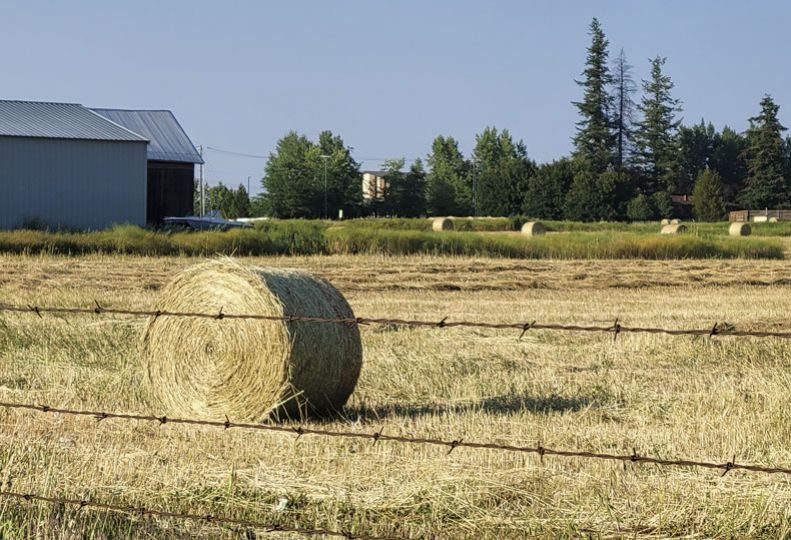
Home » Ag land values increase in Spokane area
Ag land values increase in Spokane area
Low inventory coupled with strong demand to continue in 2024, market observers say

July 20, 2023
Limited availability and strong demand from developers for agricultural land in Spokane County has contributed to record-high median farmland valuations.
The median assessed value of agricultural land for 2024, which was determined by the Spokane County Assessor’s Office earlier this year, is $5,062 per acre, says county Assessor Tom Konis. That’s a 7.5% increase from the median per-acre value of $4,708 for agricultural land this year, Assessor’s data shows.
Increased farmland valuations here also align with statewide and national trends, agricultural industry market reports show.
“They’re not making any more dirt,” says Konis, adding that the pressure from developers for housing caused by an increase of inward migration here means, “we’re running out of space.”
Assessor’s data show a trend of increasing agricultural land values over the last 10 years. The 2024 assessed value of agricultural land is 139% higher than in 2014, when the median per-acre value was $2,119.
While that price is rising, it remains a fraction of what commercial land is valued at in Spokane County. The median value of vacant, undeveloped commercial land in Spokane County is $163,636 per acre, according to Assessor’s information.
A land value report by Spokane-based AgWest Farm Credit, formerly known as Northwest Farm Credit Services, states that high interest rates, in addition to low inventory levels, are resulting in fewer agriculture property sales, longer listing times, and lower sale prices of farmland.
The lending association’s report also notes that low inventories of agricultural land could be distorting the true value of the land.
According to the AgWest report, increased year-over-year valuations are trending throughout the Northwest region, which includes Washington, Idaho, Oregon, and Montana.
Of those states, Washington has the highest average per-acre land value, at about $10,000.
AgWest’s report states that commodity prices likely aren’t negatively impacting land values this year due to generally favorable but mixed commodity prices, in addition to competing interest from growers and investors that continue to impact demand and support higher land values.
Across the U.S., agricultural land values also are trending upward, according to a report from Chicago-based real estate company Cushman & Wakefield Inc.
The Cushman report notes that agricultural land nationwide has the potential to appreciate in the long term due to additional pressures from the renewable energy industry and demand for natural resources and recreational land use.
Cushman’s assessment also notes a nationwide trend of farm owners, with an average age of 57, handing over ownership to the next generation.
Konis concurs, and says, “A lot of farmers are just aging out of wanting to work anymore. We need to protect these farmers, and we need to try to keep these larger tracts together if we can.”
It’s understandable, he says, that some farmers decide to sell their land as they get ready for retirement.
“As far as the farmers go, I understand when they’re retirement age and somebody brings them up a wheelbarrow full of money,” he says.
But the trend is contributing to an overall reduction in classified agricultural land in Spokane County since 2019. That year, just over 529,000 acres was classified as agricultural land in Spokane County. The 2024 assessment shows 515,383 acres, a decline of 2.6%.
The county does offer an incentive for property owners to keep their agricultural lands intact, Konis says. Spokane County’s Current Use program provides tax benefits for those landowners to have their properties designated for agricultural use.
About 64% of Spokane County’s 13,594 total Current Use parcels are classified specifically as farm and agriculture land, he says.
Current Use parcels are defined as land that is assessed at its current use instead of a value based on the highest and best use of the land, according to Washington state’s Open Space Taxation Act of 1970.
Konis says landowners participating in the Current Use program are only paying taxes on about 11% of the market value of their properties.
He says it’s important for property owners to keep agricultural and farm uses so communities have access to locally grown food.
“All we really have in our office to offer is this tax benefit to keep these bigger parcels intact,” says Konis. “Where are we going to get our bread from if we don’t have farmers out there that are capable of growing crops to sustain our needs?”
Latest News Special Report Real Estate & Construction Government
Related Articles
Related Products





